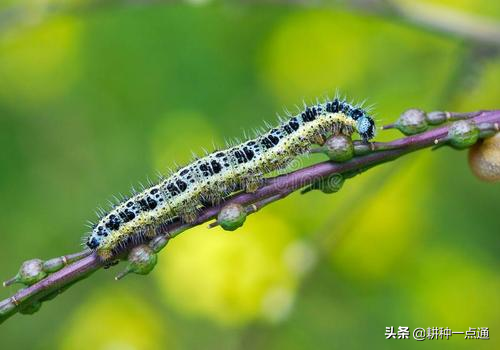
Heartworms, leaf curling moths, etc. are the main lepidopteran pests during the growing season of apples. Its harmful characteristics such as drilling moth feeding heart and curly leaves bring certain difficulties to prevention and control, and have become one of the main causes of medicine in orchards. On the basis of forecasting, the release of red-eyed bees (pine caterpillar red-eyed bees, etc.) during the peak period of pest spawning can effectively control such pests, achieve the effect of reducing the amount of chemical agents and improving the safety and quality of apples. The key points of the red-eyed bee release technique are as follows:
First, release the timing
Since the red-eyed bee is an egg parasitic wasp, it is necessary to achieve the "bee and egg encounter" in order to obtain the desired effect. Use sex attractants to predict peak egg laying periods for pests. In the Beijing-Tianjin-Hebei region in early May every year, heartworms, leaf curling moths and other lepidopteric pest traps can be hung in apple orchards, observed once every 3 to 5 days, and when adult insects are found, they are observed daily. When the number of lure moths suddenly increases, it is the peak of adult feathering, and the release of red-eyed wasps needs to begin on the second day thereafter.
Second, the number of releases
The spawning period of lepidopteran pests is long, so red-eyed wasps should be released in batches. For apple lepidopteran pests, depending on the severity of the occurrence, they can be released according to the total amount of 50,000 to 80,000 heads/667 square meters, and the adult insects are released three times on the 2nd, 6th and 10th days after the peak of adult feathering, with 40%, 40% and 20% of the total release respectively.
Third, the release method
The red-eyed bee is a small, relatively weak predator. According to the data, its effective flight radius is only about 10 meters, and its resistance to bad weather such as sun and rain is poor. Therefore, the bee card should be hung on the back of the leaf slightly outside the middle of the fruit tree (or a disposable paper cup, etc. made of a releaser to shade the sun and block the rain), and the distance between the bee points is about 10 meters (generally according to the planting line spacing, according to the interlaced or interstitial hanging bee card) is appropriate.
4. Cooperative measures
Measures to release natural enemies such as red-eyed bees can be used in conjunction with agricultural and physical measures such as orchard grass, hanging attractants, and fruit bagging. The natural grass of the orchard or the planting of alfalfa, white clover, perilla, etc., can effectively improve the ecological environment and microclimate of the orchard, and increase the number of natural enemies. Sex attractants have the characteristics of specificity, which can be used as a monitoring and forecasting measure for lepidopteran pests and can effectively control pests (more than 10 /667 m2). Before lepidoptera pests occur, fruit bagging can not only effectively prevent the borer heart-eating pests from harming the fruit, but also reduce the risk of residues on the surface of apples.
V. Precautions
Pay attention to the weather forecast, in case of strong winds, heavy rain and other bad weather, stop releasing. The use of pesticides is prohibited in orchards for 10 days before and after the release of natural enemies. In addition, the bee card should be purchased from the regular manufacturer nearby and released in time to avoid long-distance transportation and long-term storage (10 ~ 12 ° C can be stored for 7 days).